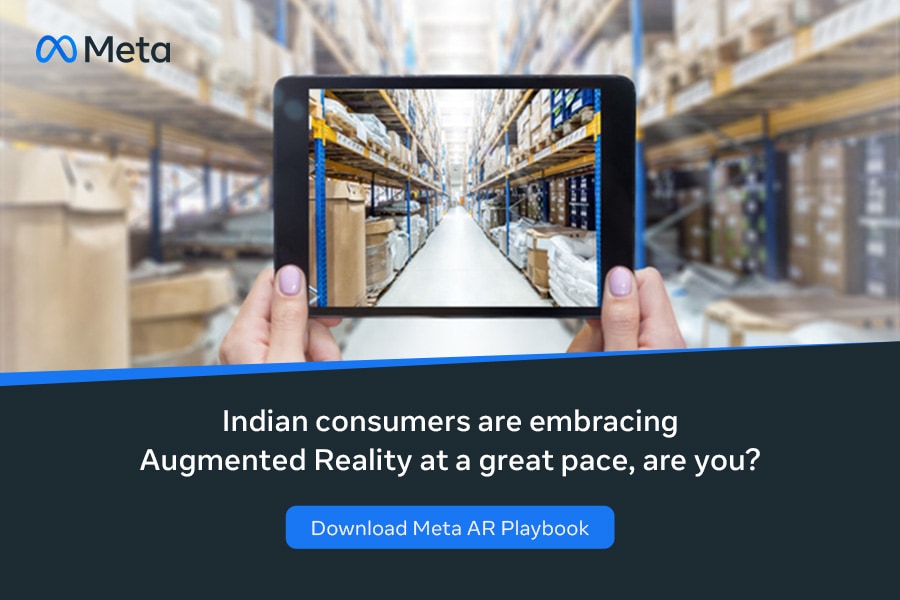
How Meta Spark has redefined engagement through AR
Meta Spark is transforming the traditional digital marketing landscape by smartly leveraging Augmented Reality and enabling brands and influencers to spread their messages creatively
 Augmented Reality (AR), a technology that superimposes a computer-generated image on a user’s view of the real world is now getting ubiquitous. Meta is a one of the leading platforms where marketers harness Augmented Reality to engage with consumers. Over 750 million users across the world use Meta Spark AR every month to tell interesting stories or spread their messages1.
Augmented Reality (AR), a technology that superimposes a computer-generated image on a user’s view of the real world is now getting ubiquitous. Meta is a one of the leading platforms where marketers harness Augmented Reality to engage with consumers. Over 750 million users across the world use Meta Spark AR every month to tell interesting stories or spread their messages1.
Businesses who tell stories using AR on platforms such as Instagram have a likely edge over others as it helps them differentiate their product or service amidst the clutter.
For instance, cosmetic brands can use AR to let their subscribers and followers try on some of their make-up. Eye wear outfits can help their followers superimpose various glasses to help users choose the right fit. Furniture brands can smartly position furniture in the living rooms of prospective customers to help them make a wiser choice. Even apparel companies can allow people to try on virtual outfits before having them make a purchase.
Meta Spark Studio: Democratising AR design
The platform called “Meta Spark studio” is itself a user-friendly one, enabling users to create such virtual experiences over a few clicks. With an assortment of hundreds of 3D models and sound clips in the AR library, one can choose from any of the standard templates to create the relevant artwork. A simulator enables the user to preview the scene as it would appear on the mobile device.
Face tracking and responding to facial gestures, say, like a wink, smile or a kiss is all a seamless experience. Another feature called “segmentation” allows one to transform the picture’s environment. Various other effects such as “target tracking” enables users to trigger an effect when the camera detects a specific target in the real world. Users can also import their own 3D objects, including animations, to further transform them based on the application at hand.




